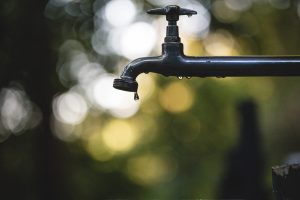Have you ever poured a nice glass of water to drink on a hot day, only to be sickened by some kind of taste or odor that’s unpleasant? This isn’t just a natural part of the water your home is getting. It’s actually due to some contaminant in the water itself. Particles like bacteria or dirt can cause water to lose its deliciously refreshing taste and make it almost sickening to drink.
But going from this reaction to investing in a water purifier or filtration system can be tricky. How do you know which system to invest in? How do you know what specific actions to take for your water? This is where water testing in Appleton comes in.
When we test your water, we’ll tell you exactly what’s in it and contributing to the foul odors, tastes, or consistency. Then, we can recommend the best products to treat your water and make it more usable.
Organic Contaminants
Organic contaminants are the first category we’ll cover that can come up on a water test. These are anything from single-celled bacteria that might be roaming in your water supply, to viruses that seek to infect you and your family.
Unfortunately, these contaminants are invisible to the naked eye and can only be detected on tests like the ones we provide.
Inorganic Contaminants
Inorganic contaminants are things like dust, dirt, and fine particles that make their way into your water supply. These are not living organisms like bacteria or viruses, but they can still cause immense problems for your personal health.
Drinking dirty water or water that’s been contaminated by unsafe materials is a safety hazard we’d like to avoid.
VOCs
VOC stands for volatile organic compounds and they’re a specific type of contaminant that can be a hazard to find in your water. They’re often associated with industrial processes and come mainly from materials like paints, fuels, and drywall. These can be exceptionally hazardous to consume in your water.
Mold, Mildew, and Fungus
Don’t forget mold! This kind of contaminant lurks in stagnant water in dark places, like deep in your plumbing system. Mold can be a big problem for your personal health since mold spores can infect you and cause serious illness.
Determining the Right Solution
Now when it comes to fighting against these contaminants, this is where testing comes into play. We want to target and eliminate the right contaminants that are causing problems for you, but this can only come from detecting which contaminants are the malicious ones in your water supply.
Water testing allows us to detect contaminants, figure out what levels they’re at, and problem-solve a solution that gets to the heart of the problem. Clean water is the goal, and we can get that when we know what we’re up against.
- For organic contaminants and mold, a UV water purifier might be the best solution. This system irradiates the water with a UV light to destroy single-celled organisms and stop infectious bacteria or viruses from infiltrating your home.
- For inorganic contaminants, a water filter would do the job. We can use reverse osmosis water filter systems that filter your water at a microscopic level to keep things clean and fresh.
Schedule water testing today with the professional plumbers at Seal Pipe Lining!

